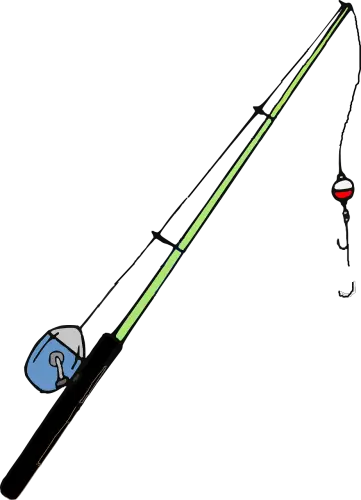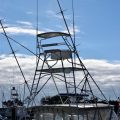
A fishing float, or bobber, is an item of angling equipment that is normally attached to
a fishing line and is used in various purposes such as suspending the bait at a
certain length, carrying the baited hook, and it can also be used as a visual
bite indicator. Floats have different shapes and sizes and they are also made
from different materials such as cork, Indian sarkanda reed, balsa wood and
even plastic.
There are various types of fishing floats. They include;
• Avon float – This is a float which is straight and has a body at the top. Most floats from
earlier on were Avon style as you could push them onto a crow quill since they
had a cork body.
• Bubble floats – Bubble floats are normally used to control the fishing line. They are
small hollow balls and have the ability to fill the water partially to control
the amount of float that is above the water.
• The Dink float – The dink float is made up of a dark foam cylinder with a small cork
cylinder at the top which is painted to serve as an indicator.
• The popper float – Also known as the “popping cork” has a design that mimics a large fish
that is feeding on the surface with rod action.
• Waggler float – The waggler float is a term that is given to any float that has been
attached at the bottom of a line. The waggler float comes in two different
forms, which includes the bodied and straight form.
• The stick float – This is a very straight float that has a taper. The stick float is
usually attached on both bottom and top lines.
• Self-cocking floats – These floats involve many styles and come in a specific
weight which enables them to stand upright automatically in the water.
• Quill floats – This is one of the oldest floats and it was originally made of bird
feather quill. However, that changed and it is now made of porcupine quill.
Below is an in-depth explanation of important elements that one should consider whenever
they want to successfully use their fishing float.
How to Use Fishing Floats
If you want to learn how to use a bobber, we are going to outline the simple steps on how
you can go about on this to ensure you know exactly how to do it yourself
without much strain. Check out the steps below.
1. Choose Your Desired Fishing Float
When it comes to using a fishing float you need to choose one that you are fully
comfortable with. As you can see from the above list of all types of fishing
floats you can try out a number of them to determine the one that suits you
best. The three major ones include the white ball-shaped floats, the round red,
and the pencil floats, as well as slip floats. However, these are way more
advanced. Therefore, you can start with the regular ones until you get the hang
of it.
2. Take the Float and Attach it to the Finish Line
When you take the bobber and attach it to the finish line, you will cause the bait to be
suspended at your preferred depth. If you are fishing in shallow ponds, the
float will be required to be much closer to your hook. If you are in a deep
lake make sure it is attached further to the line in order for the bait to sit
in the water much deeper.
3. Opt for Live Baits
When using your fishing float, the best thing to use is live bait. You can use grubs,
crawlers, earthworms, shiners, minnows, and meal worms. These are some of the
best live baits to use on the bottom of a bobber. Take your fishing line and
four snelled hooks then attach them to a leader and finally tie to the line. If
you want to catch large species of fish then the size hook is a very good
choice to consider.
4. Cast Out Your Line
Once you’ve done all the above, it’s time to cast out your line and once the bobber and the
hook are on the water you can reel in any slack that you may find. The reason
is because the slack lessens between you and the floats every time a fish bites
onto it which gives you a good opportunity to set the hook.
5. Finally, Observe Carefully
You need to make sure you observe keenly because the bobber moves when a fish begins to
bite on it. This sends out small ripples but you will have to wait until the
float is completely pulled under or strongly in either one direction then yank
the rod back very hard to set the hook. If you succeed you can hook the reel in
the fish, but if you are not you can check on your bait then cast out again.
The fishing float is especially great when used by people who are just learning how to
fish. This is because they lack the right experience to know when a fish is
biting their bait, whereas a fishing float will move whenever fish bites on the
bait. This allows learners to get a crucial clue that may see them having a
successful fishing session. Whether one is fishing for fun or they are looking
for their next meal, a fishing float will go a long way to make their work
easier and much more effective.










Pingback: How Long Would It Take a Fishing Bobber to Disintegrate? | Reel Fishing Guru